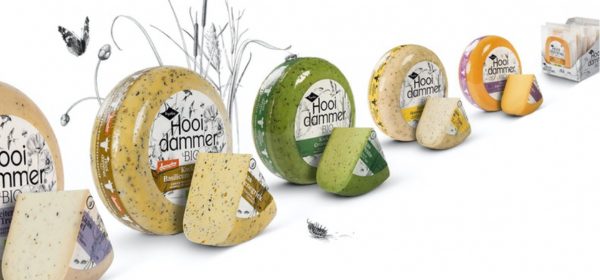Most food marketing professionals feel it coming; a transformation in agriculture is going to take place. The call for a new agricultural reality with less chemicals and fewer emissions is getting louder. As a marketer, you may not be an agricultural expert, but your role in this transition is pivotal and can significantly contribute to the cause.
We can talk long or short about it, but at the end of the day, everyone wants food and drink made with the least amount of harm to the planet. There is no debate about that. What is up for debate though; is who is going to pay for this transition? While some governments and agricultural suppliers may offer support, the consumer’s contribution is paramount. Consumers must recognise the value in paying a little extra for delicious and nutritious products, ensuring that farmers are duly rewarded for their efforts.
This is precisely where marketers, brand builders, and food designers come into play. It is our mission to cultivate more food brands with regenerative or sustainable agricultural practices at their core, brands that consumers willingly invest in. After all, isn’t that the essence of brand development – creating value for both the consumer and the brand owning company?
At Food By Design, we’ve assisted numerous food brands in positioning themselves powerfully. In recent years, we’ve observed an increasing number of organic and/or regenerative food brands with a sustainable agricultural vision turning to us to highlight their better farming practices and translating these to clear benefits for consumers. And we believe this is just the beginning. We foresee regenerative food branding becoming a major topic in the years to come. We’ve already conducted workshops on the subject during the 2024 Biokennis Week, and in this blog post, we’re excited to share insights on how to build an organic or regenerative brand.
That is why, as food By Design, we are now introducing our latest service ‘regenerative food branding’, Similar to a conventional brand positioning trajectory this service encompasses five steps. However, with regenerative branding, there’s a clear ambition—to connect with agricultural practices behind the brand and products that embrace a philosophy of restoration, renewal, and revitalisation. The aim is to leave the earth in a better state for future generations. In the positioning of organic and regenerative brands it is key to put a lens on agricultural practices and the effort to do better. For example:
- Creating healthy soil
- Use water in a sensible way
- Reduce air and water pollution to a minimum
- Storage of carbon on farms
- Enhance resilience to extreme weather events
- Enhance biodiversity
But be mindful that great branding is not about listing agri-technical facts. It is about translating these practices and philosophies into brand values and emotional engaging brand promises, stories and experiences.
Central to our regenerative food branding approach is the alignment of the brand, agriculture, and taste. A brand may boast healthiness and sustainability, but without a beloved taste or flavour promise, success may elude it. Fortunately, the practices of regenerative farming have many flavour promises waiting to be unlocked.
We’re already witnessing the emergence of such brands and like to share some of them to inspire.
– Hooidammer: Transitioning from mere organic to a brand actively striving for enhanced biodiversity around the meadows. Richer meadow life translates to a more diverse array of herbs, enriching the milk and consequently, intensifying the cheese flavour. Its new positioning can be summarised as ‘full of life, full of flavour’. This positioning brought to life by a packaging design which make use of highly detailed illustrations of the 3 ecosystems around the meadow, showing not cows but insects, weeds, amphibians and birds. Read more.

Example of an organic brand Food By Design helped to position
– Farmbrother Cookies: Crafting delectable cookies for a healthier soil. Made from 100% organic ingredients rich in nutrients and flavour, every pack of cookies sold contributes to transforming degraded farmland into healthy, organic farmland forever.
– Anheuser Busch: An organic beer brand that has spearheaded a ‘contract for change’, offering farmers the opportunity to transition to organic practices. they offer guaranteed disposal of the organic grain after the transition. See here a beautiful movie about the transition they are driving.
– Goodsam foods is a brand of chocolate, nuts and coffees that has a supply chain centered around regenerative agriculture with small holder farmers and indigenous communities who have been using regenerative practices for thousands of years. They aim to cater for ‘climavores’, consumers who choose foods based on their impact on the environment
– Plus retail an example of a retailer brand that has the guts to boast some organic products like dairy, potatoes an onions by pricing them at a same level as their non-organic equivalents while paying the farmers a decent organic price.
So these are some first lightening example of forward product and retail brands that help the agricultural revolution take place. Do you feel inspired and are you curious what regenerative or organic branding can mean for your food brand? Then do not hesitate to contact us.
PS It is worth noting that while agricultural practices can be called regenerative, organic, sustainable etc. … we use them interchangeably here because they all contribute to our quest for better and healthy agriculture. We are also aware of the unfortunate misuse of the term ‘regenerative’ for greenwashing practices, which is not our intention. Through this blog, we want to encourage food brands to make a genuine connection with the farming practices behind their products and strive for genuine improvements.
Photo credits Pexels: Gary Barnes & Wendy Wei

